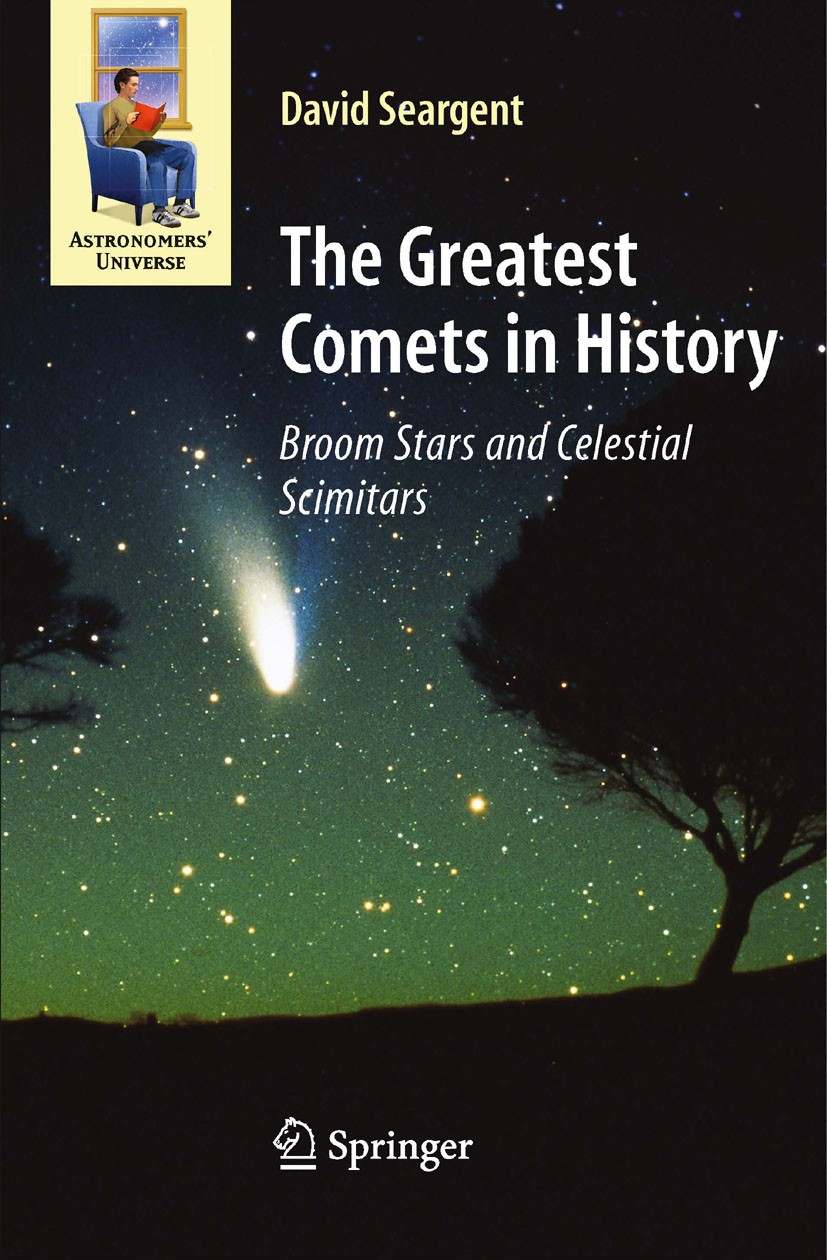| 书目名称 | The Greatest Comets in History |
| 副标题 | Broom Stars and Cele |
| 编辑 | David A.J. Seargent |
| 视频video | http://file.papertrans.cn/911/910926/910926.mp4 |
| 概述 | Written for astronomers of all levels – from interested “armchair” astronomers to professionals and History of Astronomy students.Gathers together descriptive information on major historical comets th |
| 丛书名称 | Astronomers‘ Universe |
| 图书封面 |  |
| 描述 | Naked-eye comets are far from uncommon. As a rough average, one appears every 18 months or thereabouts, and it is not very unusual to see more than two in a single year. The record so far seems to have been 2004, with a total of five comets visible without optical aid. But 2006, 1970, and 1911 were not far behind with a total of four apiece. Yet, the majority of these pass unnoticed by the general public. Most simply look like fuzzy stars with tails that are either faint or below the naked-eye threshold. The ‘classical’ comet – a bright star-like object with a long flowing tail – is a sight that graces our skies about once per decade, on average. These ‘great comets’ are surely among the most beautiful objects that we can see in the heavens, and it is no wonder that they created such fear in earlier times. Just what makes a comet ‘‘great’’ is not easy to define. It is neither just about brightness nor only a matter of size. Some comets can sport prodigiously long tails and yet not be regarded as great. Others can become very bright, but hardly anyone other than a handful of enthusiastic astronomers will ever see them. Much depends on their separation from the Sun, the intensity of |
| 出版日期 | Book 2009 |
| 关键词 | Aristotle‘s comet; Halley‘s comet; astronomy; astronomy books; comets in history; stars |
| 版次 | 1 |
| doi | https://doi.org/10.1007/978-0-387-09513-4 |
| isbn_softcover | 978-0-387-09512-7 |
| isbn_ebook | 978-0-387-09513-4Series ISSN 1614-659X Series E-ISSN 2197-6651 |
| issn_series | 1614-659X |
| copyright | Springer-Verlag New York 2009 |
 |Archiver|手机版|小黑屋|
派博传思国际
( 京公网安备110108008328)
GMT+8, 2025-12-27 17:05
|Archiver|手机版|小黑屋|
派博传思国际
( 京公网安备110108008328)
GMT+8, 2025-12-27 17:05


